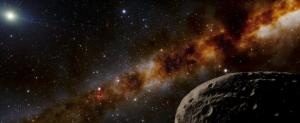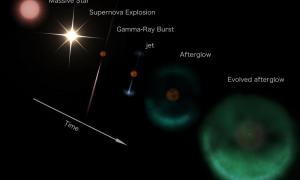Science
Peregrine Lander Fuel Leakage Deals Severe Blow to U.S. Lunar Mission
U.S. private space robotics company Astrobotic said that the lunar lander "Peregrine", which lifted off with the new "Vulcan" rocket on August 8, has lost too much fuel and has no chance of making a soft landing on the moon, which is undoubtedly a major blow to the U.S.'s hopes of sending a lander to the moon for the first time in the past 50 years!
- Read more
- 197 reads
"CES" to kick off on the 9th, igniting the battleground of the "AI PC era.
This year's (2024) Consumer Electronics Show (CES) will be held in Las Vegas from January 9-12, U.S. time. This year, the world's largest consumer electronics show, which is also the annual wind ball of the technology industry, is entering its 52nd year. According to the official website, more than 4,000 technology companies are exhibiting at this year's Consumer Electronics Show, and more than 130,000 people are expected to visit the show.
- Read more
- 208 reads
SpaceX Starship Second Test Launch Ends in Communication Loss and Explosion
Space Exploration Technologies (Space X) conducted its second test launch of the unmanned space vehicle "Starship" into space on 18th, U.S. local time, however, it exploded and lost contact a few minutes after takeoff, and the spacecraft lost its signal afterward.
- Read more
- 210 reads
Astronomers Confirm Solar System’s Most Distant Known Object Is Indeed Farfarout

- Read more
- 601 reads
Comet or Asteroid: What Killed the Dinosaurs And Where Did it Come From?

It forever changed history when it crashed into Earth about 66 million years ago.
- Read more
- 625 reads
Touchdown! NASA's Mars Perseverance Rover Safely Lands on Red Planet

Members of NASA’s Perseverance Mars rover team watch in mission control as the first images arrive moments after the spacecraft successfully touched down on Mars, Thursday, Feb. 18, 2021, at NASA's Jet Propulsion Laboratory in Pasadena, California. A key objective for Perseverance’s mission on Mars is astrobiology, including the search for signs of ancient microbial life. The rover will characterize the planet’s geology and past climate, pave the way for human exploration of the Red Planet, and be the first mission to collect and cache Martian rock and regolith.
- Read more
- 530 reads
NASA Television to Air Departure of Northrop Grumman’s Cygnus from Space Statio

Northrop Grumman’s Cygnus space freighter approaches the International Space Station where the Canadarm2 robotic arm is poised to capture it for docking.
- Read more
- 634 reads
European Space Agency Signs Deal to Remove Debris from Orbit
The European Space Agency (ESA) has signed a $102 million contract with a Swiss start-up company to purchase a unique service: the first-ever removal of an item of space debris from orbit.
- Read more
- 571 reads
A hint of new physics in polarized radiation from the early Universe

Figure: As the light of the cosmic microwave background emitted 13.8 billion years ago (left image) travels through the Universe until observed on Earth (right image), the direction in which the electromagnetic wave oscillates (orange line) is rotated by an angle β. The rotation could be caused by dark matter or dark energy interacting with the light of the cosmic microwave background, which changes the patterns of polarization (black lines inside the images). The red and blue regions in the images show hot and cold regions of the cosmic microwave background, respectively.
- Read more
- 552 reads
Catching a Radio Surprise

An artist view of how a supernova can create an afterglow of radio light.
- Read more
- 621 reads
Human Rights
Fostering a More Humane World: The 28th Eurasian Economic Summi

Conscience, Hope, and Action: Keys to Global Peace and Sustainability

Ringing FOWPAL’s Peace Bell for the World:Nobel Peace Prize Laureates’ Visions and Actions

Protecting the World’s Cultural Diversity for a Sustainable Future

Puppet Show I International Friendship Day 2020

